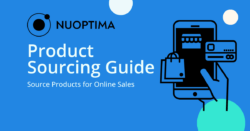Key Points
- Your trade mark is highly valuable to your business. But losing a trade mark battle can be costly and hugely detrimental to your business. This is why you must protect your trade mark sufficiently.
- Tips for protecting your trade mark include selecting a solid mark, undertaking a comprehensive trade mark search, and registering, monitoring and maintaining your trade mark. You should also ensure you respond efficiently to any office actions or oppositions and consider registering your trade mark internationally.
Your trade mark is a highly valuable business asset. Not only does it reflect and represent your brand, but it sets you apart from competitors. Losing a trade mark battle can prove to be detrimental to your company and have devastating effects. Fighting to protect your trade mark in court is costly and time-consuming; you can get a lot of negative attention focused on your business, and this can lead to your entire marketing strategy having to be reworked. While protecting your trade mark is a constant battle, there are tips you can follow that will make this process easier and that help to strengthen the protection of your trade mark. In this article, we offer seven top tips on how to protect your trade mark.
Seven Essential Tips for Protecting Your Trade Mar
1. Select a Solid Mark from the Beginning
A trade mark is often the first interaction someone has with your brand and, if selected well, should also protect against infringement. Therefore, it is highly prudent to meticulously think through the process of choosing a strong, solid trade mark. Below is a list of the different categories of trade marks:
- Generic mark – A generic mark depicts a general product or service. For instance, a brand that sells biscuits calling themselves ‘Biscuits’. Offering trade mark protection on something as generic as this would restrict all other brands that sell biscuits. A generic trade mark does not qualify for a trade mark unless it includes more detail. To qualify, a generic mark needs to describe the characteristics, qualities, or ingredients of the goods your company sells.
- Descriptive mark – A descriptive mark only serves to describe the product and identifies one or more characteristics of a product or service. An example of this could be ‘Very Hot Peppers’. A descriptive mark has individual elements that qualify it for protection under trade mark laws. For instance, the results of a consumer survey may determine if it qualifies (if consumers recognise the mark and identify it with the brand). To qualify, this mark should evolve from ‘what’ to ‘who’ the brand represents.
- Suggestive mark – A suggestive mark implies or hints at something about the goods or service. A mark in this category generally qualifies for protection without needing a second meaning. Suggestive means that the consumer must use their imagination to determine what services or goods the company offers. For instance, Jaguar, the automotive brand. The name suggests both speed and agility but does not instantaneously convey a car manufacturer.
- Arbitrary mark – An arbitrary mark might include a phrase or term with a common meaning, but the meaning in its case is different. Good examples of this include Domino’s, the pizza company and Apple, the computer and electronics manufacturer. The main downside to this option is the need to educate consumers about the goods or services offered under the trade mark until the brand becomes more established.
- Fanciful mark – A fanciful mark is a term, logo, or name that is different from anything else in existence. It is the easiest category for getting trade mark protection as it generally doesn’t compete with anything else (or become overly generic). Well-known examples include Adidas, Starbucks, and Kodak. These words have no meaning in common language, so trade marking them does not infringe on other companies’ rights that sell similar products.
Arbitrary and fanciful marks have the most robust protection levels against infringement, however, these choices often require more advertising and marketing to get customer recognition. On the other hand, suggestive marks describe some aspect of the goods or services but also may leave you vulnerable to infringement. It is essential that you consider with great care the type of trade mark that is best for your company.
2. Conduct a Comprehensive Trade Mark Search
Once you have selected your mark, you must complete a comprehensive trade mark search. This involves determining if your mark is already in use by another individual or company. It can be frustrating to learn your mark may infringe on another business, but it is best to know this before investing in product labels, signage, and anything else where your trade mark is shown. If you do not complete a comprehensive search, it could cost you much time and money to rebrand your business further down the road.
To protect your trade mark, it is wise to work with an experienced trade mark lawyer or attorney. It is not recommended to handle this alone when completing a trade mark search. Generally speaking, disputes regarding trade marks do not originate from exact matches but from any mark that could cause a likelihood of confusion with a pre-existing mark. Conducting a simple Google search or consulting a legal website will only inform you of exact matches. However, the search tools used by trade mark lawyers are more sophisticated. Plus, once the search is done, you can rest assured that your company name, slogan, logo, and anything else you wish to trade mark is in no way infringing on another business.
3. Register Your Trade Mark
Once you have conducted a comprehensive trade mark search, you then need to register it. In the United States (US), this is through the United States Patent and Trademark Office (USPTO). In the United Kingdom (UK), this is through the Intellectual Property Office (IPO). While using your mark without registering may allow you common law protections, these are highly limited. You will only have legal rights to the mark locally. Therefore, you are not protected if someone in another part of the country uses the same mark. Furthermore, you also do not have protection and can find yourself in trouble legally if you choose to expand to another location where the mark is already in use. To get complete trade mark protection, you must register your trade mark.
In most cases, the date that you filed your application becomes your national priority date on your trade mark. This means no other individual or business can register a confusingly similar mark after this official date. Hesitating to register your trade mark could make you waive your protections if another individual or company registers their similar mark before you. Your trade mark lawyer will know how to protect your unique trade mark by accurately identifying the types of goods and services you wish your mark to represent. This is critical as your trade mark protections only cover the goods and services listed in the application or any natural expansion of those goods and services.
It is highly recommended that you register everything associated with your trade mark (including name, logo, slogan, and product names). Basically, anything that references your trade mark should be registered at once. You should also register any ideas you may have for future use. By protecting them now, you are guaranteed to have them later on. Keep your trade marks hidden from your competitors until you register them. If they register a trade mark before you put it into use, it will lead to you having to rework your marketing plan or paying them for the rights.
It is also highly sensible to register all of your social handles. Registering your business name but losing the ability to have matching social profiles is far from ideal. This can lead to customers struggling to find you. Therefore, you should register ‘@mycompany’ on Twitter, and ‘Facebook.com/mycompany’ on Facebook to maintain your rights to them. Do the same for any products or brand pages for which you wish to run separate profiles. Other social platforms to consider include Instagram, Snapchat, LinkedIn, Skype, and Youtube.
4. Respond Quickly to Office Actions or Oppositions
Once your trade mark application has been sent off, it will be reviewed. If there are any questions or concerns, you will receive an official letter called an ‘Office action’. These are not uncommon, and it is vital that you take them seriously and respond within the deadline (otherwise, the application will be seen as abandoned). When responding, ensure that you adequately address the problems. Once all issues have been resolved, notice of your mark will be published (in the Official Gazette in the US and the IPO’s online trade marks journal in the UK). If anybody objects to the trade mark registration, they can file an opposition. It is important to bear in mind that office actions and oppositions might raise complicated technical and legal issues. As you risk having your application refused, getting advice from a trade mark lawyer is sensible.
5. Monitor Your Trade Mark
If you want to protect your registered trade mark efficiently, you must monitor it. While the USPTO and IPO register the mark, they are not liable for enforcing the exclusivity of its use. The first step is to start using the Ⓡ symbol once your application has been registered. This gives public notice to other individuals or businesses that the mark is federally registered and protected. Use the symbol wherever your trade mark is seen, including signs, labels, and your website. The majority of people do not want to infringe on your trade mark, and this public notice will put off most from infringing.
A small number of people may wish to deliberately use your trade mark for their gain. It is vital to know how to protect your trade mark against infringement. Ensure you assert your rights as a trade mark holder to protect both your brand and reputation. One effective technique is a cease-and-desist letter. However, if this fails to do the trick, your legal protections as a trade mark owner allow you to file suit against the unauthorised user of your mark. The effort and time you invest into protecting your mark through careful monitoring is an important part of keeping both your brand and business safely under your control.
6. Consider Registering Your Trade Mark Internationally
The protection you have as the owner of a trade mark in your country does not apply elsewhere. Indeed, trade marks are considered country-to-country, meaning any trade mark disputes outside your country probably will not be protected by your federal trade mark. If your trade mark reaches another country, such as manufacturing products in China, you may wish to learn how to protect your trade mark internationally.
Certain countries (including China) give trade marks on a first-to-file basis, meaning that the first person to register a mark in that country will probably be granted the rights, regardless of how they plan to use it. Choosing not to register internationally could cost you massively in the long term. It can affect your ability to protect yourself against counterfeiters and may prevent expansion into new global locations.
Generally, the process of filing for trade mark protection in other countries is not overly burdensome. There is no single application that gives you rights in every country, but a treaty known as the Madrid Protocol has made the process far easier. If you want to register with one or more of the 90 member countries, you fill out a single application in one language. The Madrid Protocol does not guarantee the approval of any application, as each country needs to review your application and decide whether to approve it or not. Also, note that not every country is affiliated with the Madrid Protocol, and so to register in a non-member country, you will need to do so through their own trade mark office.
Maintain Your Trade Mark
Remember that your trade mark protections are only going to be available if you continue using it. It is vital that you employ consistent use of the mark (meaning you must use the exact same words, logo, or design as were registered initially). If you do not do this, it weakens the trade mark protections and could prove to be a big problem in a trade mark dispute. Ensure that you also document consistent and continued use of your trade mark in any renewal filings.
Your trade mark will not expire if you continue using the products and services listed in your original application. But, you will need to renew your registration to keep your protections:
- The first renewal occurs between the fifth and sixth year
- The next renewal will occur around ten years after your initial registration date
- Then, you will need to file a renewal every ten years to keep protecting your trade mark
In the US, the USPTO will not alert you to your renewal date. The responsibility to renew lies with the trade mark owner, and if the renewal deadline is missed, the trade mark will end up being cancelled. In the UK, the IPO will send you a renewal reminder roughly six months before the registration expires.
Final Thoughts
Your trade mark is integral to your company, and so it is important that you know how to sufficiently protect it. This article has provided seven top tips on how to thoroughly protect your trade mark, such as selecting a solid trade mark, conducting a thorough trade mark search, and ensuring that you register, monitor and maintain your trade mark. Registering your trade mark is one thing, but it is absolutely vital that you are actively monitoring any unauthorised use as well. Follow our top tips, and you can be confident that your trade mark is safe and fully protected.




